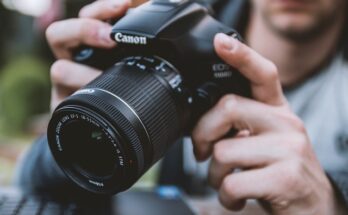Mastering the Medium In the ever-evolving landscape of media production, actors are faced with an increasingly diverse array of camera setups. From traditional film cameras to smartphones and everything in between, the way performances are captured varies greatly. As such, mastering the involves more than just honing one’s craft; it requires a deep understanding of how different camera setups affect the portrayal of characters and narratives. In this article, we delve into the nuances of adapting performance for different camera setups and explore how actors can leverage these variations to enhance their artistry.
Understanding the Medium
Before delving into the specifics of adapting performance for different camera setups, it’s essential to understand the unique characteristics of each medium. Traditional film cameras, for example, offer a cinematic quality characterized by depth of field and texture. On the other hand, digital cameras, including DSLRs and mirrorless cameras, provide crisp, high-definition imagery with greater flexibility in post-production. Smartphones and webcams, while perhaps lacking in technical sophistication, offer immediacy and intimacy due to their ubiquity and accessibility.

Tailoring Performance
With this understanding in mind, actors can tailor their performances to suit the requirements of each camera setup. When working with traditional film cameras, for instance, subtle facial expressions and nuanced gestures can have a profound impact, as the medium excels at capturing detail and emotion. In contrast, performances intended for digital cameras may benefit from a more restrained approach, as the heightened clarity can amplify even the slightest movements.
Embracing Versatility
One of the hallmarks of a skilled actor is versatility, and this extends to adapting performances for different camera setups. Whether portraying a character in a sweeping cinematic epic or a low-budget indie production shot on a smartphone, the ability to modulate one’s performance accordingly is paramount. This requires a keen awareness of how various factors, such as framing, lighting, and focus, interact with the chosen medium.
Framing and Composition
The framing and composition of a shot play a crucial role in how a performance is perceived. Actors must consider not only their own positioning within the frame but also how their movements and expressions interact with the surrounding environment. In a close-up shot, for example, the focus is squarely on the actor’s face, requiring a more intimate and nuanced performance. Conversely, wide shots demand broader gestures and movements to convey emotion and intention.
Lighting and Atmosphere
Lighting sets the mood and atmosphere of a scene, influencing the emotional resonance of a performance. Actors must be mindful of how different lighting setups affect their appearance and adjust their delivery accordingly. Soft, diffused lighting may call for a softer, more introspective performance, while harsh, directional lighting may necessitate a more dramatic and assertive approach.

Adapting to Constraints
In some cases, actors may find themselves working within constraints imposed by the chosen camera setup. Limited mobility, for example, may restrict the range of movement available to the actor, requiring them to find creative solutions to convey emotion and intention within a confined space. Similarly, technical limitations such as focus and depth of field may impact how performances are captured, necessitating adjustments in delivery to ensure clarity and coherence.
Collaboration with Crew
Effective collaboration with the film crew is essential in adapting performance for different camera setups. Cinematographers, directors, and other members of the production team all play a role in shaping the visual narrative, and actors must be receptive to their input and guidance. By working together harmoniously, the entire creative team can elevate the quality of the final product and ensure that the performance is seamlessly integrated into the overall vision of the project.
Conclusion
the is an ongoing journey for actors, one that requires adaptability, versatility, and a deep understanding of the nuances of different camera setups. By tailoring their performances to suit the requirements of each medium, actors can maximize the impact of their work and contribute to the success of the overall production. With the continued evolution of technology and the proliferation of new platforms for content creation, the ability to adapt performance for different camera setups will only become more crucial in the years to come.



